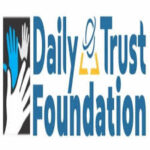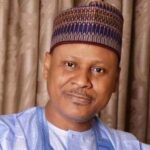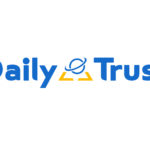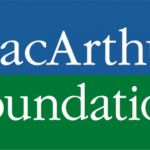The idea of content analysis is well steeped in media studies and adjudged to be particularly rewarding when working with data from media and related sources. On account of the duality of its functionality manifesting in both quantitative and qualitative approaches as deployed here, it often avails researchers the benefit of depth and breadth of data concerned.
The use of content analysis for data derived from no fewer than 12 news media organs provides a clinically thorough sample extraction. This, in turn, is amenable to precise numerate assessment as well as substantial contextual analysis of the relevant contents of the selected media.
Overview of the Monitoring
The selected media in this regard are nine print media namely The Punch, The Guardian, Daily Sun, Vanguard, ThisDay, Nigerian Tribune, The Nation, Leadership and Daily Trust The three online ones are Blue Print (online version) as well as The Cable (published online only) and the Premium Times (published online only).
The focus of the monitoring here is clear: to showcase the electoral/governance process, namely: the pre-election/voter registration phase; the electoral campaigns/voting phase and the post-election/governance phase.
The monitoring, according to the International Press Centre, IPC, is to fundamentally provide evidence-backed information on state of media performance in the coverage of the electoral processes and the 2019 elections.
It therefore noted the gaps for the purpose of using the outcome as a tool for continuous engagement with journalists, media managers and media gate keepers on the need to ensure media professionalism.
More specifically, the monitoring decidedly focused on no fewer than SIX categories of supposed political stakeholders with justifications, in the course of extracting data. These are:
- Political Parties
especially in relation to giving equitable media opportunity to diverse sides of the political and electoral equation.
- Aspirants/Candidates
Equitable access
Youths and the Electoral Process
Here, the stories were monitored to specifically determine the extent of media access/coverage given to electoral activities by or about youths.
- Women and the Electoral Process
- People Living with Disabilities (PWDS) and the Electoral Process
- The Electoral Management Body (EMB) – INEC
- Sources
Here, the reports were monitored to assess the types of stakeholders consulted to lend credence to identified relevant reports.
On the whole, a total of 4,217 editorial items were found relevant to the media content monitoring exercise in the 12 newspapers with the highest three from Blue Print, Daily Sun and Nigerian Tribune
Reporting Format (Genre)?
Here, the relevant reports were monitored to know the form of reporting, that is, whether reported as news, editorial, features, interview, Letter to the Editor, Photograph, Opinion etc.
Thematic Areas Focused Upon
- Campaign Promises
Here, the reports were monitored to determine and document the campaign promises of the presidential candidates of the political parties.
A total of 3,145 reports on political and governance issues were tracked between July and September. These issues bothered on the followings:
Political Conflict
171 reports were published on political conflicts, accounting for 5.44% of identified relevant reports.
Election Petition:
49.22% of all political and governance issues reported were on election petitions with 1,548 reports.
Campaigns:
A total of 688 reports were published on campaigns by political parties Candidates, representing 21.88%. The reports were in the context of the buildup of political and campaign activities ahead the Kogi and Bayelsa States gubernatorial elections on November 16, 2019.
Hate speech
No evidence of hate speech was observed in the monitored reports.
Units of Analysis
Out of 4,217 total reports identified as relevant and monitored, 3,710 reports were published as News (at 88%) while 204 of the relevant reports were published as Features at (4.8%). There were 23 Editorials at (0.55%); 98 reports were Opinion articles at (2.32%);
7 reports were Letters to the Editor (0.17%) and 26 were photographs (0.62%).
Others include 9 reports published as Cartoons (0.2%); 1 as Vox Pops (0.02%) and 138 Interviews making 3.3%.
One Video was found relevant within the period, representing 0.02%.
A total of 233 reports were published on the activities of Independent National Electoral Commission (INEC) within the period under review.
Recommendations
Expectedly, IPC concludes the analysis with recommendations directed first at the media and secondly at INEC.
It counsels that media managers need to sit with their editorial teams to strategise on the best ways of ensuring inclusive political and electoral reporting and equitable coverage of all political stakeholders, especially the political parties and candidates.
IPC goes on to counsel INEC to issue press releases regularly in response to the concerns of parties, candidates, the media, civil society groups, the citizens, etc, while also striving to ensure that such press releases and other information dissemination instruments are more evenly reported in the media through monitoring. In particular, it notes the wide disparity between the no of its followers on Twitter-1.4million and the mere three thousand engagements.
IPC as Peace Builder
IPC’s role here is commendably developmental. Specifically, it fulfils that of a peace builder. It did not elect to merely romance with the vast data but goes on to offer what I deem as clearly as constructivist and actionable suggestions as evident in the report especially in the recommendations. Its a thorough scientific study of contents of selected media and INEC website. NOT SERVER!
This intervention is in line with the vision of the duo of Diamond and McDonald in 1996 as the brains behind multi-track diplomacy originally conceptualized for conflict situations in the international context though.
It is a web of interrelated but distinct entites considered to be very relevant to conflict resolution from time to time. Dont we all agree that elections are like wars in Nigeria?
The idea originated from the increasing concern with the inefficiency of pure government mediation. It is a design intended to incorporate all aspects of mediation from the ground-level work of private citizens to the top-level meetings of heads of governments. Ladies and gentlemen, please recall that IPC states clearly in the report that its quarterly media roundtables are normally convened… to enable media and other electoral stakeholders draw relevant lessons relating to the need to adhere to professional and ethical standards in the coverage of the electoral process and governance issues with a view to avoiding hate speech, being conflict-sensitive and giving prominence to the issues of citizens, women, youths, persons living with disabilities (PLWDs), etc. ”
Nine in all, media and communication/public opinion is the ninth but central to the rest eight. This Media and Communication/Public Opinion track is the realm of the voice of the people including how public opinion gets shaped and expressed by the press and other genres of mass media. Peace Activism such as encompassing Non governmental organizations which is the category IPC falls, constitute(s) Track 6 of MTD. Such is the acceptability of MTD today that a whole institute is dedicated to it to perpetuate its understanding by serving and potential diplomats.
IPCs trajectory in peace activism dates back to 2006 when it published its first work on media and religious conflicts. It reinforced this with yet another publication in 2008. So, it is indeed a case of working on familiar turf.
However, perhaps for reasons ranging from multiple deadlines for projects and the likes, this report could have attained a better perfection. Most fundamental in this regard is the obvious uncertain deployment of some technical concepts, the most conspicuous being on page 5, 6 and 17.
Still on what could be done better, illustrative tables, charts and histograms in their reasonably colourful forms most robustly endear the report to readers. Strikingly however, none of them is properly tagged as figure 1 or so. No less distracting is the wordy captions for most of them. This simply reminds us of the early school years warning of the fewer your words the fewer your mistakes.
It is important to note that all the media analysed could be rightly labeled mainstream media that may not have reported the grassroots to our satisfaction. But you will agree with this reviewer that the grassroots are not any less important than city dwellers whose affairs are readily reported by mainstream media.
In the light of IPCs confessed passion for inclusivity and the ever recurring factor of limited resources therefore, monitors could take better advantage of online resources like Google Alert to track additional relevant information. This will, in no small measure help to further democratize IPCs search for information that may otherwise not be captured by the mainstream media. This will as well fulfill the aspirations of the Public Communication Charter, PCC, which remains unmatched in uniting the grassroots in the search for and use of information globally. IPC will do well to enable monitors familiarize with this document.
On the final note, I have personally found the report as invaluable for research and consider it as indispensably didactic for the media, INEC and the rest of the society.
Tunde Akanni PhD
Director, Digital Media Resource Centre, DMRC, LASU
Follow him on Twitter @AkintundeAkanni
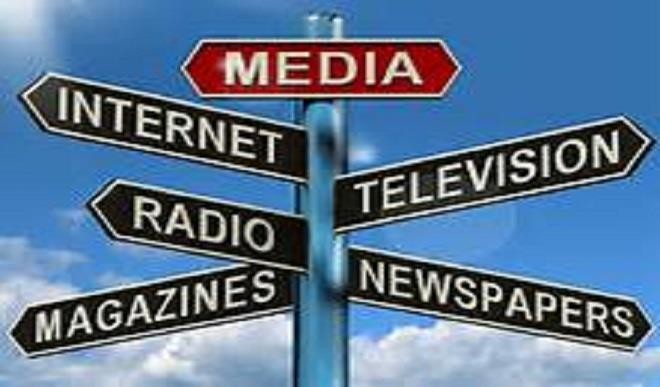
 Join Daily Trust WhatsApp Community For Quick Access To News and Happenings Around You.
Join Daily Trust WhatsApp Community For Quick Access To News and Happenings Around You.